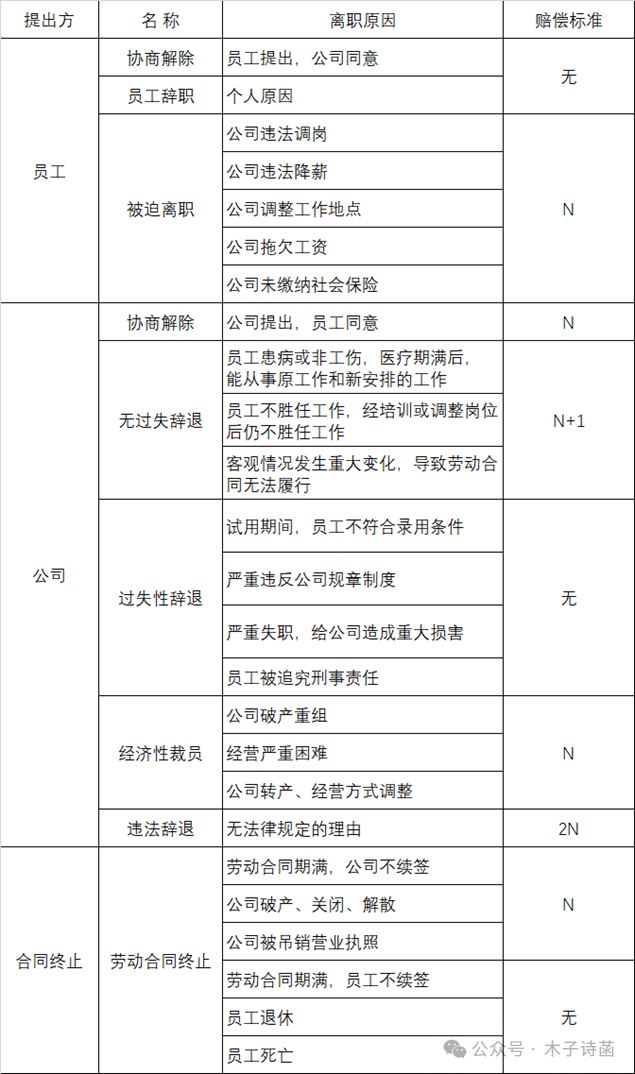JPA教程 - JPA查询选择两个实体示例
以下JPQL从两个实体中选择。
List l = em.createQuery("SELECT d, m FROM Department d, Professor m WHERE d = m.department").getResultList();
例子
以下代码来自Professor.java。
package cn.w3cschool.common;
import java.util.ArrayList;
import java.util.Collection;
import java.util.Date;
import javax.persistence.Entity;
import javax.persistence.Id;
import javax.persistence.ManyToMany;
import javax.persistence.ManyToOne;
import javax.persistence.OneToMany;
import javax.persistence.OneToOne;
import javax.persistence.Temporal;
import javax.persistence.TemporalType;
@Entity
public class Professor {
@Id
private int id;
private String name;
private long salary;
@Temporal(TemporalType.DATE)
private Date startDate;
@OneToOne
private Address address;
@OneToMany(mappedBy="employee")
private Collection<Phone> phones = new ArrayList<Phone>();
@ManyToOne
private Department department;
@ManyToOne
private Professor manager;
@OneToMany(mappedBy="manager")
private Collection<Professor> directs = new ArrayList<Professor>();
@ManyToMany(mappedBy="employees")
private Collection<Project> projects = new ArrayList<Project>();
public int getId() {
return id;
}
public void setId(int empNo) {
this.id = empNo;
}
public String getName() {
return name;
}
public void setName(String name) {
this.name = name;
}
public long getSalary() {
return salary;
}
public void setSalary(long salary) {
this.salary = salary;
}
public Date getStartDate() {
return startDate;
}
public void setStartDate(Date startDate) {
this.startDate = startDate;
}
public Collection<Phone> getPhones() {
return phones;
}
public void addPhone(Phone phone) {
if (!getPhones().contains(phone)) {
getPhones().add(phone);
if (phone.getProfessor() != null) {
phone.getProfessor().getPhones().remove(phone);
}
phone.setProfessor(this);
}
}
public Department getDepartment() {
return department;
}
public void setDepartment(Department department) {
if (this.department != null) {
this.department.getProfessors().remove(this);
}
this.department = department;
this.department.getProfessors().add(this);
}
public Collection<Professor> getDirects() {
return directs;
}
public void addDirect(Professor employee) {
if (!getDirects().contains(employee)) {
getDirects().add(employee);
if (employee.getManager() != null) {
employee.getManager().getDirects().remove(employee);
}
employee.setManager(this);
}
}
public Professor getManager() {
return manager;
}
public void setManager(Professor manager) {
this.manager = manager;
}
public Collection<Project> getProjects() {
return projects;
}
public void addProject(Project project) {
if (!getProjects().contains(project)) {
getProjects().add(project);
}
if (!project.getProfessors().contains(this)) {
project.getProfessors().add(this);
}
}
public Address getAddress() {
return address;
}
public void setAddress(Address address) {
this.address = address;
}
public String toString() {
return "Professor " + getId() +
": name: " + getName() +
", salary: " + getSalary() +
", phones: " + getPhones() +
", managerNo: " + ((getManager() == null) ? null : getManager().getId()) +
", deptNo: " + ((getDepartment() == null) ? null : getDepartment().getId());
}
}
以下代码来自Address.java。
package cn.w3cschool.common;
import javax.persistence.Entity;
import javax.persistence.Id;
@Entity
public class Address {
@Id
private int id;
private String street;
private String city;
private String state;
private String zip;
public int getId() {
return id;
}
public void setId(int id) {
this.id = id;
}
public String getStreet() {
return street;
}
public void setStreet(String address) {
this.street = address;
}
public String getCity() {
return city;
}
public void setCity(String city) {
this.city = city;
}
public String getState() {
return state;
}
public void setState(String state) {
this.state = state;
}
public String getZip() {
return zip;
}
public void setZip(String zip) {
this.zip = zip;
}
public String toString() {
return "Address id: " + getId() +
", street: " + getStreet() +
", city: " + getCity() +
", state: " + getState() +
", zip: " + getZip();
}
}
下面的代码来自PersonDaoImpl.java。
package cn.w3cschool.common;
import java.util.List;
import javax.persistence.EntityManager;
import javax.persistence.PersistenceContext;
import org.springframework.transaction.annotation.Transactional;
@Transactional
public class PersonDaoImpl {
public void test(){
prepareData();
List l = em.createQuery("SELECT d, m FROM Department d, Professor m WHERE d = m.department").getResultList();
for(Object p:l){
System.out.println(p);
}
}
private void prepareData(){
Professor p = new Professor();
p.setId(0);
p.setName("TOM");
Department d = new Department();
d.setId(1);
d.setName("Design");
p.setDepartment(d);
d.getProfessors().add(p);
em.persist(p);
em.persist(d);
}
@PersistenceContext
private EntityManager em;
}
以下代码来自Phone.java。
package cn.w3cschool.common;
import javax.persistence.Entity;
import javax.persistence.Id;
import javax.persistence.ManyToOne;
@Entity
public class Phone {
@Id
private long id;
private String number;
private String type;
@ManyToOne
Professor employee;
public long getId() {
return id;
}
public void setId(long id) {
this.id = id;
}
public String getNumber() {
return number;
}
public void setNumber(String phoneNo) {
this.number = phoneNo;
}
public String getType() {
return type;
}
public void setType(String phoneType) {
this.type = phoneType;
}
public Professor getProfessor() {
return employee;
}
public void setProfessor(Professor employee) {
this.employee = employee;
}
public String toString() {
return "Phone id: " + getId() +
", no: " + getNumber() +
", type: " + getType();
}
}
以下代码来自Project.java。
package cn.w3cschool.common;
import java.util.ArrayList;
import java.util.Collection;
import javax.persistence.Entity;
import javax.persistence.Id;
import javax.persistence.Inheritance;
import javax.persistence.ManyToMany;
@Entity
@Inheritance
public class Project {
@Id
protected int id;
protected String name;
@ManyToMany
protected Collection<Professor> employees = new ArrayList<Professor>();
public int getId() {
return id;
}
public void setId(int projectNo) {
this.id = projectNo;
}
public String getName() {
return name;
}
public void setName(String projectName) {
this.name = projectName;
}
public Collection<Professor> getProfessors() {
return employees;
}
public void addProfessor(Professor employee) {
if (!getProfessors().contains(employee)) {
getProfessors().add(employee);
}
if (!employee.getProjects().contains(this)) {
employee.getProjects().add(this);
}
}
public String toString() {
return getClass().getName().substring(getClass().getName().lastIndexOf(".")+1) +
" no: " + getId() +
", name: " + getName();
}
}
下面的代码来自Department.java。
package cn.w3cschool.common;
import java.util.HashSet;
import java.util.Set;
import javax.persistence.Entity;
import javax.persistence.Id;
import javax.persistence.OneToMany;
@Entity
public class Department {
@Id
private int id;
private String name;
@OneToMany(mappedBy="department")
private Set<Professor> employees = new HashSet<Professor>();
public int getId() {
return id;
}
public void setId(int deptNo) {
this.id = deptNo;
}
public String getName() {
return name;
}
public void setName(String deptName) {
this.name = deptName;
}
public Set<Professor> getProfessors() {
return employees;
}
public String toString() {
return "Department no: " + getId() +
", name: " + getName();
}
}
上面的代码生成以下结果。
![]()
以下是数据库转储。
Table Name: ADDRESS
Table Name: DEPARTMENT
Row:
Column Name: ID,
Column Type: INTEGER:
Column Value: 1
Column Name: NAME,
Column Type: VARCHAR:
Column Value: Design
Table Name: PHONE
Table Name: PROFESSOR
Row:
Column Name: ID,
Column Type: INTEGER:
Column Value: 0
Column Name: NAME,
Column Type: VARCHAR:
Column Value: TOM
Column Name: SALARY,
Column Type: BIGINT:
Column Value: 0
Column Name: STARTDATE,
Column Type: DATE:
Column Value: null
Column Name: ADDRESS_ID,
Column Type: INTEGER:
Column Value: null
Column Name: DEPARTMENT_ID,
Column Type: INTEGER:
Column Value: 1
Column Name: MANAGER_ID,
Column Type: INTEGER:
Column Value: null
Table Name: PROJECT
Table Name: PROJECT_PROFESSOR


















